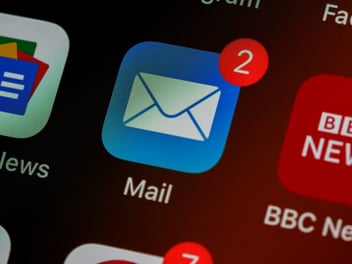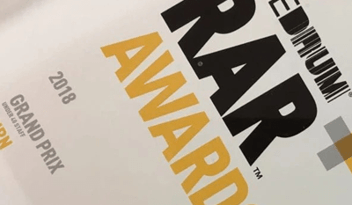“Are you sure you want to go?”: Abandon Basket Emails
By Burn •
- Digital
As email experts (we were voted the best eCRM agency in the UK at the Recommended Agency Register Digital Awards in June this year), part of what we do is look at how to maximise the impact of every email. For this post, we will be looking at better understanding the potential of abandon basket emails, finishing with ten top tips to kick off your future campaigns.
TOPLINE INSIGHTS
Despite a staggering 75.6% of customers leaving behind their order before purchasing, three quarters of these people planned to come back. Considering this, perhaps unsurprisingly, 60% of consumers returned to make a purchase within 24 hours of receiving personalised abandoned basket emails. Failing to incorporate strong abandon basket emails into your eCRM programme is a critical, but surprisingly common, mistake.
WHY DO SO MANY PEOPLE ABANDON BASKET?
To generate an informed solution for abandoned baskets, we delved into the main reasons behind customers leaving their basket before converting. These were as follows:
- high shipping costs
- high product price
- comparing prices across other websites
- website crash or internet connection cut off (sometimes they don’t want to go!)
- leaving the product for later consideration
- lack of time
- complicated/long checkout process
- no guest checkout option
- lack of payment options
TEN TOP TIPS TO GET PEOPLE TO FOLLOW-UP
-
Make sure you have their email address!
It may seem blindingly obvious, but you can’t send a basket abandonment campaign without knowing the email address of your customer in the first place. We recommend that you ask your potential customer for their email address in the first step of the funnel or suggest they enter their email address as they are about to abandon their basket.
-
Test, test, test.
Do some A/B testing with different subject lines and sending times – it depends on the specific audience as to when they are most active.
Top tip: including the recipient’s name and the abandoned product name in the email’s subject line can increase the open rate.
-
Remind them promptly.
Automate an abandoned basket email in the first 60 minutes to get the most conversions, when the experience with the brand is still fresh in the customer’s mind.
-
Up-sell and cross-sell.
Don’t forget abandon basket emails are a natural opportunity to include similar or complementary products to those in the abandoned basket e.g. Amazon’s iconic ‘Other people who bought this product, also bought…’.
-
Resolve and reassure.
Provide information about anything that might be standing between the customer and purchase e.g. return policy, payment options, good reviews from other purchasers. This will prompt their buying decision e.g. ASOS tell their visitors at the very beginning of the checkout process which payment options are available, removing any doubt visitors might have about not being able to pay with their preferred option.
-
Show their basket’s contents.
Display the abandoned product image to visually prompt what you’re talking about and a clear call-to-action button leading to the cart.
-
Segment your audience.
For example, offer a discount to high-value baskets or free shipping to lower-value baskets.
Warning: do not train your customer to abandon their basket only to expect a coupon code from you. Differentiate your email content and incentives, e.g. include a discount coupon in the second or third email for first-time purchasers only.
-
Evoke emotions, provoke action.
Everyone knows if you can cultivate emotion in a customer, you’re onto a winner. Below are a couple of examples of how to make a basket abandonment email emotive:
Urgency – use urgency in both the subject line and campaign copy. This could be a clear deadline or simply a reminder that these goods might soon be gone. Make it convey the feeling of “Now or Never”. People have a fear of missing out on a really good deal. Combine it with a great incentive and you’ve got a winning campaign.
Imply possession – The words “forget” and “left behind” imply that the products already belonged to the person. It’s more difficult to give up on something that you already feel is yours in comparison to a product that never belonged to you.
-
Simply offer help
Sometimes a potential customer gives up because finishing the order is too complex or they’re experiencing issues.
-
Still no luck? Learn something for next time.
Ask your customers to fill out a survey to unearth why they abandoned their cart. The reasons might be unexpected. Understanding your audience’s behaviour is crucial for creating the perfect basket abandonment email campaign or even preventing abandonment in the first place.
If you’d like some strategic help to construct an email journey or creative assistance with your eCRM, visit www.burnmarketing/com or call us on 0208 332 7204.


